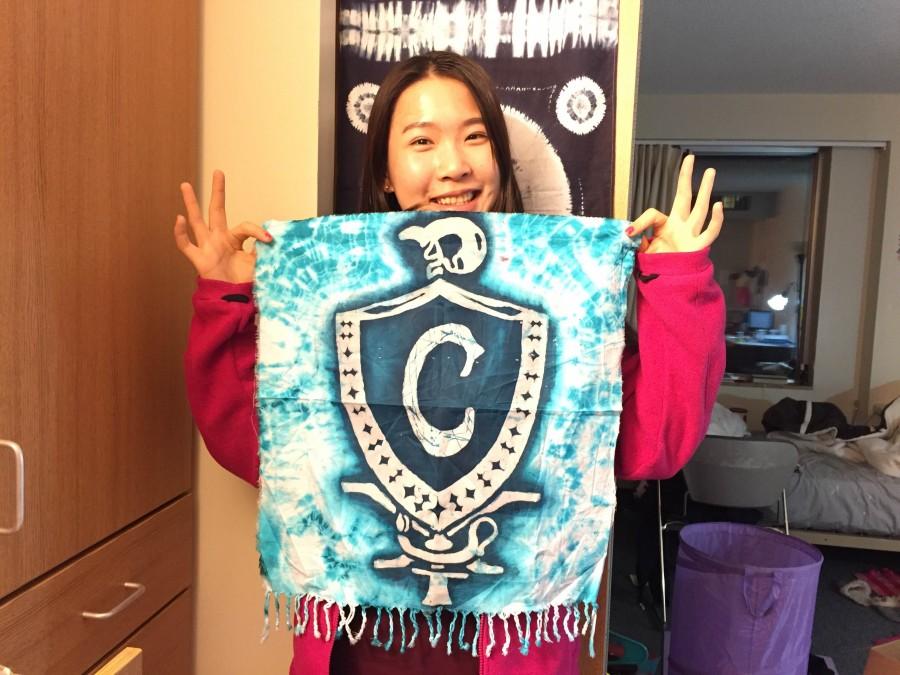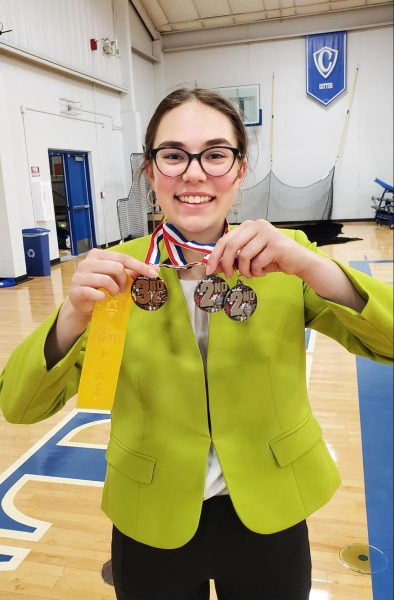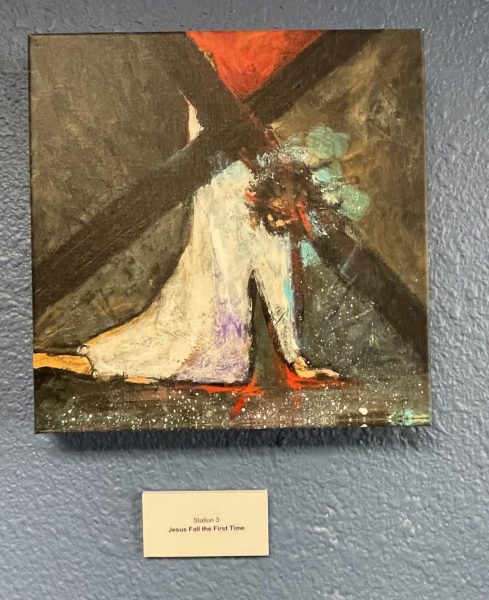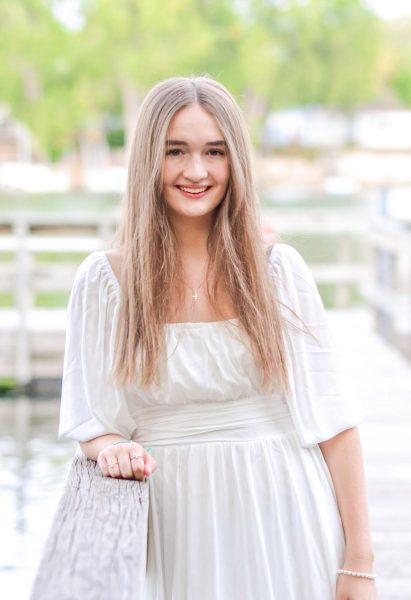Student brings traditional Chinese art to Cotter
Gloria (Ruxin Qiauo) Yang is bringing the traditional Chinese arts of batik and Chinese tie-dye to Cotter.
Gloria is an international student from Shanghai, China. She is an only child and lives with her father and her mother. She is a junior in her second year of study in the United State at Cotter.
She started to learn art when she was in kindergarten. In kindergarten, she learned art forms designed for the child. When she entered elementary school, she started painting. She started sketching in junior high school in China. She also learned the techniques of batik and Chinese tie-dye at that time. The professor of batik and Chinese tie-dye came to her school from Shanghai University, and she taught the techniques.
One reason of she that learning batik and Chinese tie-dye was interesting to her was that “none of my friends know about it”, she said.
“Gloria is a good artist.” Cotter art teacher Mrs. Forney said. “Gloria is learning many art skills and she is good learner. It is important to take risk and try new things when making art works. Gloria has shown me that she wants to continue to learn more,” said Mrs. Forney.
She dyed the Cotter logo on a piece of fabric during this summer break. This piece used techniques of batik and Chinese tie-dye. The center part of cloth, which has the Cotter logo printed on it, is done in batik and the outside part of the design was done using Chinese tie-dye. So, she mixed up two techniques on one piece.
Batik is wax printing. It is one of the Chinese traditional art techniques applied to dyed fabrics. Batik has a long history. Cotton, silk, and linen are commonly used for fabric. She used wax to dye the Cotter logo which is in the center part of the her piece. When the wax was dried completely, She dyed the fabric three or four times to make sure the dye was completely soaked in. Then, the fabric is dyed in the cold water. She dried the fabric for one week.
Chinese tie-dye has long history and originated in Yunnan, in the southwest of China. There are different ways to make Chinese tie-dye. Her technique is one of the general techniques which first ties and then dyes the fabric. Cotton, silk, and linen are also common to use for fabric. They have material to mix to create the dye, which is made from Chinese herbs. This herb mixture will dye fabric to dark blue. Dark blue and white are traditional colors for Chinese tie-dye.
However, these days, some chemical materials are use to dye for providing other colors. She used chemical material to dye light blue which is outside part of Cotter logo. She tied the center part of the Cotter logo to dye only outside part of fabric for two to five minutes. If she ties the center part of that, that part is not dyed. So, she tied only the outside part.
Here is a video which explains and shows the process of this type of tye-dyeing. https://vimeo.com/144262296
Gloria was interested in having Cotter offer a class about batik and Chinese tie-dye. After speaking with Mrs, Forney there will no be a class offered during January in the new “J term” flex time in Mrs. Forney’s art room.
When asked why other students might be interested in taking this course from Mrs. Forney, Gloria said “they should try new things and this will give them confidence.”
Mrs. Forney said, “Gloria’s art is wonderful.” Through her art work, Gloria likes to express her thoughts and she enjoys the creative process. “She has many good ideas.” Mrs. Forney said. “The Chinese tie-dye class will be a lot of fun.”
In the class, first, students will learn a little about the history of these arts and look at example of them. Then, they will learn the basic skill of how to tie and dye. “Some of it will be experimental.”, Mrs. Forney said. She is looking forward to learning more herself through the course.
June Chu, junior at Cotter. She is one of the student who has signed up to take Chinese tie-dye class, “I am from China, but I don’t know much about the Chinese tie-dye, so I think I should learn about it.” Chu said.












